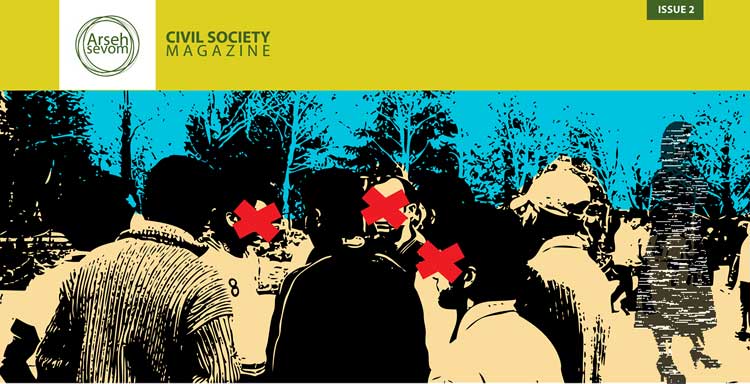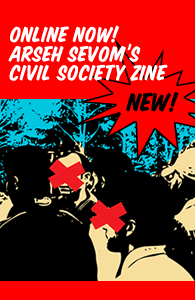
From Monitoring to Building: Questions for South African Peace-Worker Jasmin Nordien
November 22, 2011Letter to an Iranian Friend (complete text)
November 27, 2011Dear Readers,
The term “Arab Spring” has always felt ominous to me rather than optimistic. After all, we all know what happened after the short-lived Prague Spring of 1968, which was brutally squashed. As I write this in November, 2011, we read that more than 32 people have been killed in clashes in Cairo’s Tahir Square. Thousands have been arrested. Amnesty is reporting that people in Egypt who dare to express themselves are being arrested and tried in military courts.
“By using military courts to try thousands of civilians, cracking down on peaceful protest and expanding the remit of Mubarak’s Emergency Law, the SCAF has continued the tradition of repressive rule which the January 25 demonstrators fought so hard to get rid of,” said Philip Luther, Amnesty International’s Middle East and North Africa Acting Director.
“Those who have challenged or criticized the military council – like demonstrators. journalists, bloggers, striking workers – have been ruthlessly suppressed, in an attempt at silencing their voices.”
Mubarak may be gone. One Goliath out of the way. The repression that so motivated the people who took to the streets is not. Bloggers like Maikel Nabil stew in prison, go on hunger strikes, and risk their freedom.
Hamza Hendawi of the Associated Press reports:
“We should not have left the streets. We handed power to the military on a silver platter,’’ said Ahmed Imam, a 33-year-old activist. “The revolutionaries went home too soon. We collected the spoils and left before the battle was over.’’
What needs battling now is not one simple monster, but a network of monsters and deeply held attitudes. Some of those held by the very people doing battle for freedom. In the words of the American cartoonist Walt Kelly, “We have met the enemy, and he is us.” For many of us, the stakes are clear. They are rooted in respect for fundamental human rights. “There can be no stability without human rights,” was the refrain at a recent conference held by the Crisis Group. The rights that were once seen as luxuries, are now seen as fundamental to security. “We now tell businesses if they want to find stable locations, they need to examine the human rights record,” one official said. Still, many consider human rights a luxury rather than a necessity.
In the second issue of Arseh Sevom’s Civil Society Magazine, called David and Goliath, we asked contributors to tell us what comes after all the unity, after the giant is slain, after the monster is gone? What comes next? It was clearly a difficult question; one without a simple answer. The story of David and Goliath is a story of the (perceived) weak against the powerful, of prevailing against the odds, of bravery and leadership. However modern day Goliaths aren’t so easy to dispel with one little pebble.
While we may not have definitively answered the question, “What comes next,” the articles in this Zine share ideas about human rights, the Arab Anger, Islamicization, leadership, and women’s rights. These all make important contributions to our search for ways forward, while engaging a variety of voices from a range of experiences and locations.
In this issue we read Davi Barker’s article on 9th century Muslim anarchists, Anita Hunt’s suggestions for building community organizations, and an interview with Amnesty Switzerland’s Antonia Bertschinger.
In A letter from an Arab woman to her Iranian friend, Amal Hamidallah-van Hees addresses the fears and hopes of Arab and Islamic women watching the changes in their region. “We are watching with our eyes wide open,” she writes. A Lebanese human rights activist asks, “Are we capable of managing the diversity we have?” In an interview with Iranian women’s rights activist Mahnaz Afkhami, readers are reminded of the long arc of the women’s rights movement and how resilient it has been even in the face of oppression. She tells writer Hooman Askary, “The green movement in Iran is the continuation of what had been started nearly a century before and gone through ups and downs, changes and evolutionary and revolutionary transformations.”
Peace-worker, Jasmine Nordien tells us, “…I no longer wanted to monitor the society I did not want to live in. I wanted to build the kind of society that my children and grandchildren would group up in.” Arturo Desimone interviews Tunisian activist Ghassen Athmni who checks our optimism and reminds us that difficult times are coming as the nation struggles with democracy. “What the activists have done is more a revolt, a rebellion of civil society than a revolution, he tells us. We also hear from Eric Asp the pastor at Amsterdam50 plus more!
We encourage submissions to the Zine and to Arseh Sevom. The theme for the Spring 2012 issue is security, crime, and human rights. In Summer of 2012, we will investigate justice, truth, and reconciliation. To read the guidelines for the Spring issue, please click here.
To check out the guidelines for Arseh Sevom, click here.
We have a special thanks to Kamran Ashtary for art direction. Tori Egherman created most of the illustrations. I also want to thank Tessa Kersten for her critical eye.
We look forward to your comments and contributions. Join the conversation. Leave a comment or join us on Facebook. Thank you,
Tori Egherman
Editor
Amsterdam, November 22, 2011




